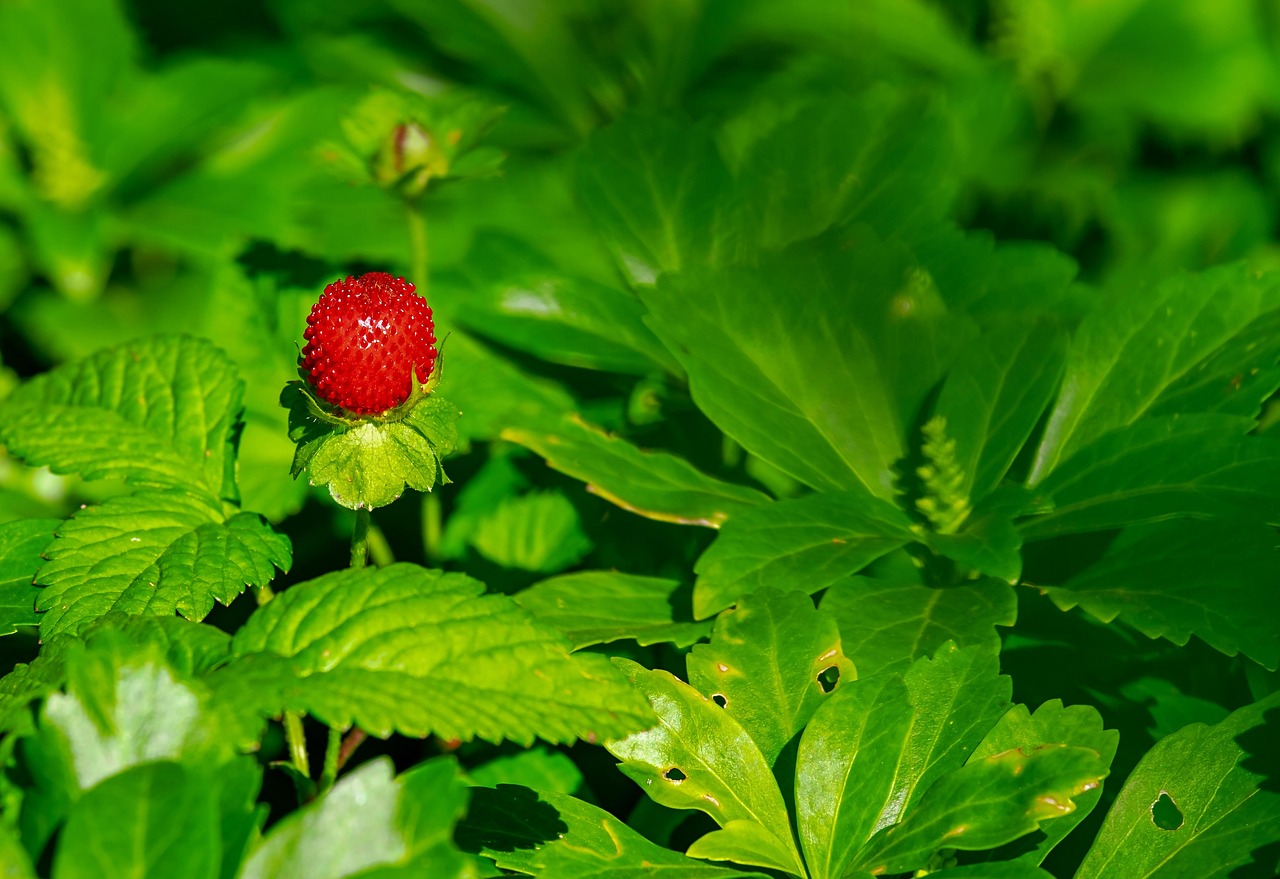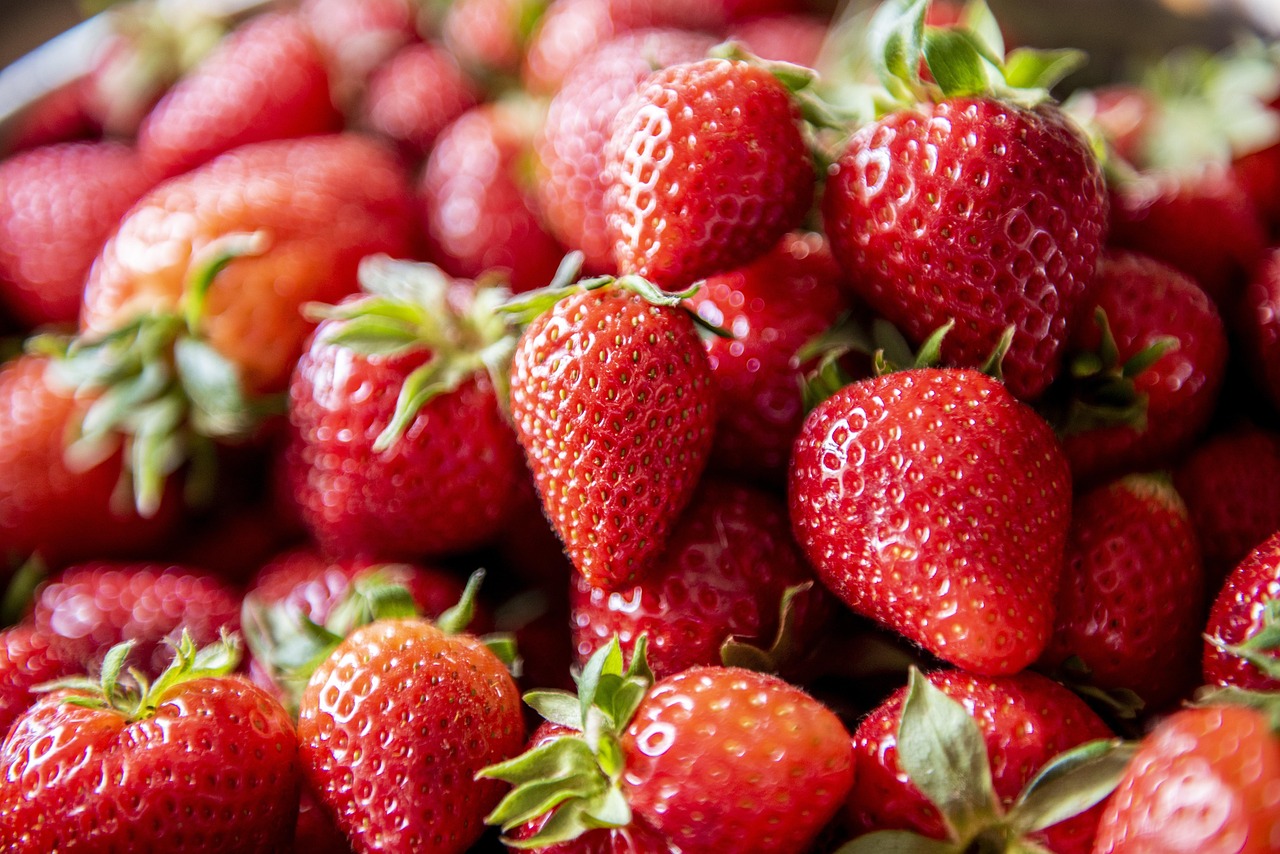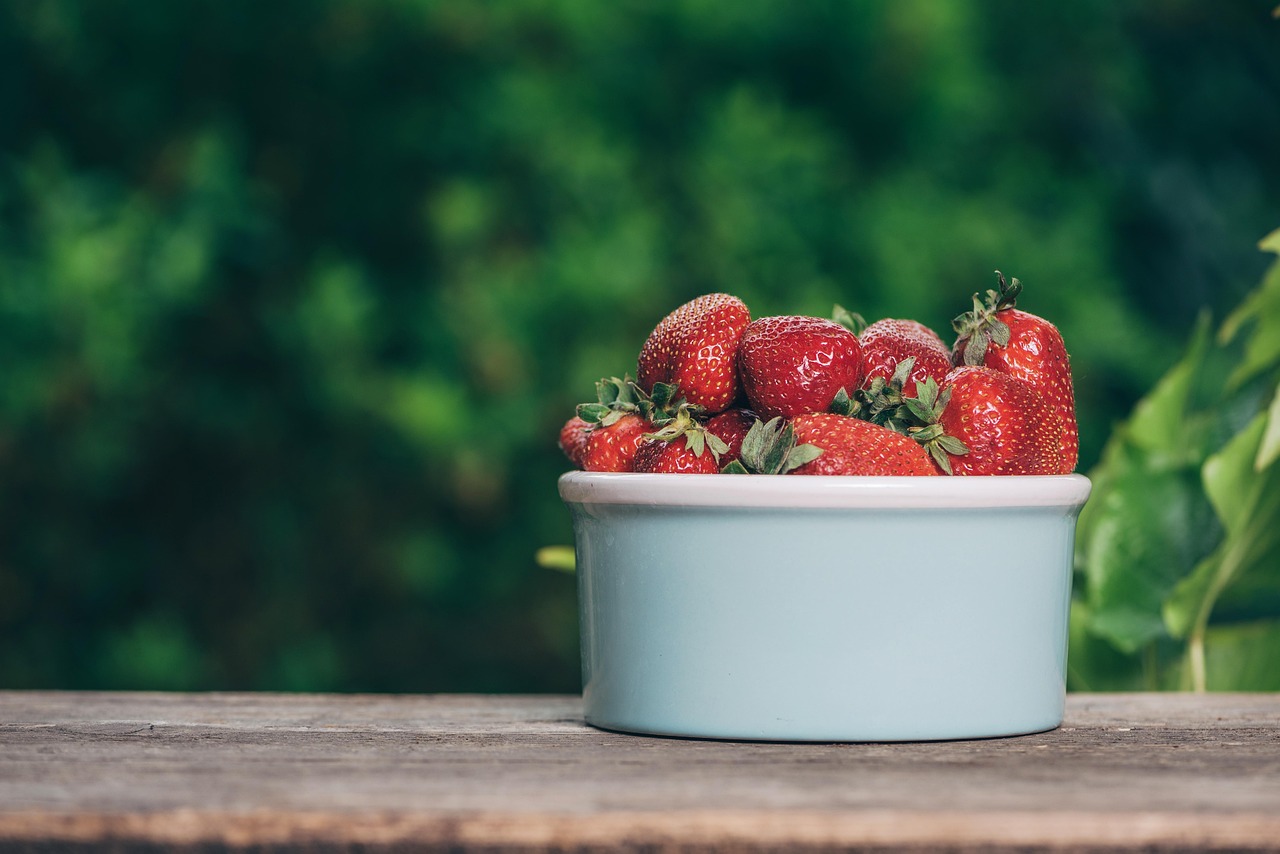Strawberry leaf blotch is a fungal disease that affects strawberry plants, characterized by dark blotches on leaves. Identifying symptoms early is crucial for effective management. Implementing proper cultural practices and timely fungicide applications can help control the spread and impact of this disease, ensuring healthier strawberry crops.
Understanding Strawberry Leaf Blotch

Strawberry leaf blotch is primarily caused by the fungus Mycosphaerella fragariae. This disease can significantly affect the health and yield of strawberry plants. The symptoms typically appear in the form of irregular, dark lesions on the leaves, which can expand and lead to premature leaf drop. This not only impacts photosynthesis but also weakens the overall plant structure.
The disease thrives in warm, moist environments, making strawberries particularly susceptible during certain seasons. Growers often notice outbreaks during periods of high humidity or prolonged rainfall. Understanding the conditions that favor the development of strawberry leaf blotch is essential in preventing and managing this troublesome fungal infection.
Symptoms of Strawberry Leaf Blotch
Identifying strawberry leaf blotch early can help in managing its spread effectively. The main symptoms include:
- Dark green to black blotches on the upper side of leaves.
- Yellowing of leaves around the edges as the disease progresses.
- Premature leaf drop, leading to reduced photosynthetic capacity.
- In severe cases, entire plants may show stunted growth.
Recognizing these symptoms allows growers to take timely action. Without intervention, the disease can lead to significant crop losses, making it imperative to monitor strawberry plants closely, especially during vulnerable periods.
Environmental Conditions Favoring Disease Development
Certain environmental factors contribute to the occurrence and severity of strawberry leaf blotch. These factors include:
- High humidity levels, especially during the flowering and fruiting stages.
- Warm temperatures, typically between 60°F and 80°F (15°C to 27°C).
- Poor air circulation around plants, often due to overcrowding or dense foliage.
Understanding these conditions can help farmers implement preventive measures. For instance, ensuring proper spacing between plants can enhance airflow, reducing humidity levels around the foliage.
Management Strategies
Effective management of strawberry leaf blotch involves a combination of cultural practices and chemical controls. Some recommended strategies include:
- Crop Rotation: Rotate strawberry crops with non-susceptible plants to break the disease cycle.
- Sanitation: Remove and destroy infected plant debris at the end of each growing season.
- Fungicide Applications: Use fungicides as a preventive measure, especially during high-risk periods.
- Watering Practices: Water plants in the morning to allow foliage to dry quickly during the day.
The implementation of these practices not only aids in controlling strawberry leaf blotch but also promotes overall plant health. Regular monitoring and early intervention remain key components in managing this disease effectively.
| Management Strategy | Description |
|---|---|
| Crop Rotation | Changing planting locations yearly to reduce pathogen buildup. |
| Sanitation | Cleaning up debris helps eliminate sources of infection. |
| Fungicides | Applying fungicides proactively during high-risk periods. |
| Watering Practices | Morning watering to minimize moisture on leaves. |
By understanding the nature of strawberry leaf blotch and implementing these management strategies, growers can significantly reduce the impact of this disease on their strawberry crops. Early identification and consistent monitoring play crucial roles in maintaining healthy plants and optimizing yields throughout the growing season.
Fungicide Options for Managing Strawberry Leaf Blotch
When it comes to managing strawberry leaf blotch, fungicides can play a vital role in controlling the disease and protecting the plants. Choosing the right fungicide is essential for effective treatment. There are several types of fungicides available, each with its own mode of action and application guidelines.
Chemical Classes of Fungicides
Fungicides can be categorized into various chemical classes based on their active ingredients. Understanding these classes will help growers select the most suitable products for their needs. Some common classes include:
- Contact Fungicides: These fungicides remain on the surface of the leaves and prevent fungal spores from germinating. They need to be reapplied frequently, especially after rain.
- Systemic Fungicides: These are absorbed by the plant and provide protection from within. They often offer longer-lasting effects compared to contact fungicides.
- Biological Fungicides: Derived from natural organisms, these products can suppress fungal pathogens without harming beneficial microbes in the soil.
Choosing the appropriate class of fungicide depends on factors such as the severity of the infection, environmental conditions, and the specific growth stage of the strawberry plants. Always follow label instructions for proper usage.
Popular Fungicide Products
Several fungicide products are known to be effective against strawberry leaf blotch. Here are some commonly used options:
- Chlorothalonil: A broad-spectrum contact fungicide effective in preventing and controlling various fungal diseases.
- Propiconazole: A systemic fungicide that is effective against leaf blotch and other fungal pathogens.
- Bacillus subtilis: A biological fungicide that helps suppress fungal diseases while promoting healthy plant growth.
- Pyraclostrobin: A systemic fungicide with protective and curative properties suitable for managing leaf blotch.
Each product may have specific application rates and timing. It is crucial for growers to consult local extension services or agricultural advisors to determine the best products for their region and conditions.
Cultural Practices to Enhance Plant Health
In addition to using fungicides, cultural practices play an essential role in the overall management of strawberry leaf blotch. Implementing these practices can help strengthen plant health and reduce disease susceptibility.
Soil Management
Soil health is critical for robust strawberry growth. Here are some practices to improve soil conditions:
- Soil Testing: Regular soil testing helps identify nutrient deficiencies and pH imbalances. Amendments can be made based on test results to promote optimal growth.
- Organic Matter Addition: Incorporating compost or well-rotted manure enhances soil structure, fertility, and microbial activity.
Planting Techniques
Proper planting techniques contribute significantly to plant health. Consider the following:
- Raised Beds: Planting strawberries in raised beds improves drainage and reduces waterlogged conditions that favor fungal diseases.
- Proper Spacing: Adequate spacing between plants enhances airflow, reducing humidity around the foliage.
Irrigation Management
Water management is vital for strawberry cultivation. Effective irrigation practices include:

- Drip Irrigation: Utilizing drip irrigation minimizes water on foliage, reducing the risk of disease development.
- Scheduling: Watering early in the morning allows plants to dry out during the day, limiting moisture retention on leaves.
By adopting these cultural practices along with fungicide applications, growers can create a more resilient environment for strawberry plants. This integrated approach not only helps manage strawberry leaf blotch but also promotes overall crop health and productivity.
Integrated Pest Management (IPM) for Strawberry Leaf Blotch

Integrated Pest Management (IPM) is a holistic approach to managing strawberry leaf blotch and other diseases. It combines various strategies to minimize disease pressure while promoting environmental health. By integrating cultural, chemical, and biological methods, growers can effectively combat fungal diseases.
Monitoring and Scouting
Regular monitoring and scouting for symptoms of strawberry leaf blotch are essential components of an effective IPM strategy. Growers should develop a routine to assess plant health and identify early signs of infection. Key practices include:
- Visual Inspections: Conduct regular visual inspections of plants, particularly during the flowering and fruiting stages when the risk of disease is heightened.
- Record Keeping: Maintain detailed records of weather conditions, disease outbreaks, and treatment applications to better understand patterns and improve future management decisions.
- Sampling: Collect leaf samples for laboratory testing if disease symptoms are observed. Identifying the specific pathogen can guide treatment decisions.
Biological Control Options
Biological control agents can be effective in managing strawberry leaf blotch while minimizing chemical inputs. These agents often enhance plant resilience against diseases. Some beneficial organisms include:
- Bacillus subtilis: This beneficial bacterium can suppress fungal pathogens, including those causing leaf blotch, by outcompeting them for resources.
- Trichoderma spp: Fungi in this genus are known to inhibit the growth of various plant pathogens and can be applied as a soil amendment or foliar spray.
- Mycorrhizal Fungi: These beneficial fungi form symbiotic relationships with plants, enhancing nutrient uptake and improving overall plant health.
Incorporating biological control measures can reduce reliance on synthetic fungicides and promote a more sustainable growing environment.
Seasonal Management Practices
Implementing seasonal management practices is crucial for minimizing the incidence of strawberry leaf blotch. By adjusting cultural and chemical strategies according to the growing season, growers can enhance disease resistance.
Spring Management
As the growing season begins, it is important to establish a proactive management plan. Key actions during spring include:
- Soil Preparation: Ensure soil is well-aerated and properly drained to reduce moisture retention.
- Early Planting: Plant strawberries as early as possible to allow for growth before peak disease conditions arise.
- Preventive Fungicide Application: Apply fungicides preventively at the onset of flowering to protect against initial infections.
Summer Management
During the summer months, conditions may become more favorable for fungal diseases due to increased humidity and heat. Recommended practices include:
- Pest Monitoring: Regularly check for pests that can stress plants, making them more susceptible to diseases.
- Mulching: Use organic mulch to suppress weeds and maintain soil moisture while preventing splashing of soil onto leaves.
- Fungicide Applications: Monitor weather conditions and apply fungicides as needed when disease pressure increases.
Fall Management
The fall season presents unique challenges as plants prepare for dormancy. Effective management actions include:
- Disease Cleanup: Remove all plant debris from the field after harvest to eliminate potential sources of infection for the following season.
- Soil Health Improvement: Consider cover cropping or incorporating organic matter to enhance soil structure and fertility over the winter months.
- Late-Season Fungicide Applications: Apply fungicides if symptoms are detected late in the season to protect remaining foliage before dormancy.
By implementing these seasonal management practices, growers can significantly reduce the risk of strawberry leaf blotch and other diseases, leading to healthier plants and improved yields in subsequent growing seasons.
Long-Term Strategies for Strawberry Health

In addition to immediate management practices, long-term strategies can significantly enhance the health of strawberry plants and reduce the incidence of diseases like strawberry leaf blotch. Focusing on soil health, cultivar selection, and sustainable practices will contribute to a more resilient strawberry crop.
Soil Health and Fertility
The foundation of healthy strawberries begins with soil health. Implementing the following strategies can improve soil quality and fertility:
- Regular Soil Testing: Conduct soil tests every few years to monitor nutrient levels and pH. Adjustments based on test results can lead to optimal plant growth.
- Organic Amendments: Incorporate organic materials such as compost, manure, or cover crops to enhance soil structure and microbial activity.
- Crop Rotation: Rotate strawberries with other crops that do not host the same pathogens. This disrupts the disease cycle and improves soil health.
Cultivar Selection
Choosing disease-resistant strawberry cultivars can greatly reduce the risk of leaf blotch and other fungal diseases. Growers should consider the following:
- Resistance to Fungal Diseases: Select varieties that are bred for resistance against strawberry leaf blotch and other common diseases.
- Local Adaptation: Choose cultivars that are well-suited to the local climate and soil conditions for improved performance.
- Market Preferences: Consider consumer preferences for size, taste, and shelf-life when selecting cultivars.
Sustainable Practices
Sustainable agricultural practices not only aid in managing diseases but also contribute positively to the environment. Some practices to consider include:
- Integrated Pest Management (IPM): As previously discussed, adopting an IPM approach helps in managing pests and diseases with minimal chemical input.
- Water Conservation Techniques: Implement rainwater harvesting or efficient irrigation systems to use water judiciously.
- Wildlife Habitat Conservation: Encourage beneficial insects and wildlife by maintaining natural habitats around strawberry fields, which can help control pest populations.
Final Thoughts
Managing strawberry leaf blotch effectively requires a comprehensive approach that includes early identification, proper cultural practices, and timely fungicide applications. By understanding the disease cycle and the environmental conditions that promote fungal growth, growers can take proactive steps to protect their crops. Implementing integrated pest management techniques, maintaining soil health, and selecting the right cultivars are essential strategies for long-term success.
The journey to growing healthy strawberries is ongoing. It demands attention to detail, commitment to sustainable practices, and a willingness to adapt based on observations and research. With these strategies in place, strawberry growers can look forward to bountiful yields while minimizing the impact of diseases like strawberry leaf blotch on their crops.
By fostering a holistic approach to strawberry cultivation, not only will growers enhance their productivity but also contribute to more sustainable agricultural practices that benefit the environment and future generations.
